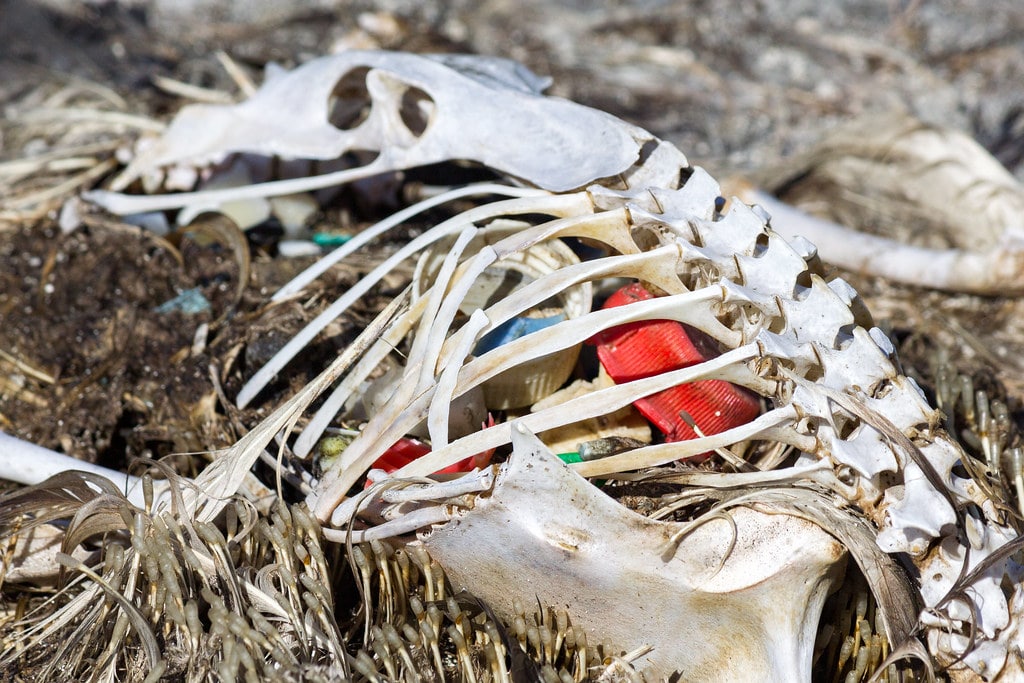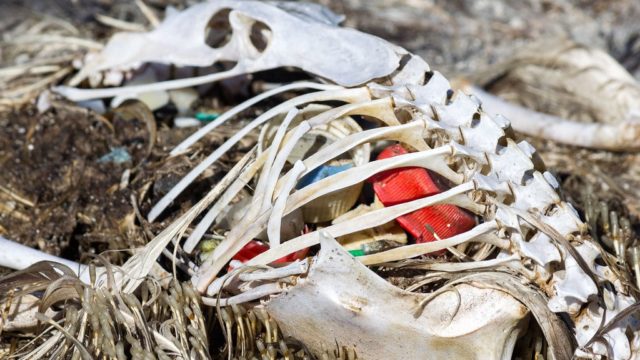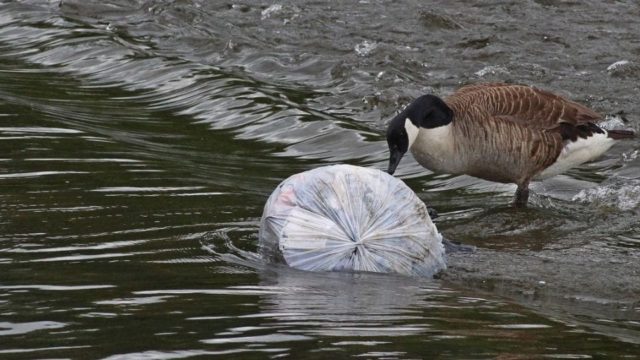Plastic production has skyrocketed in recent decades – globally, we now produce about 300 million tonnes annually, 20 times more than just 40 years ago.
The low-cost and versatility of plastic has made it a staple in our economy and in our lives. From packaging to clothing, construction materials to personal protective equipment, plastic is everywhere.
But this convenience comes at a cost. The rate at which we produce and consume plastic items, coupled with poor management of plastic waste, is spelling disaster for wildlife and the environment.
The plastic pollution problem
The climate crisis is being fueled by the plastic crisis — though really, they’re both part of the same big melting pot of human-caused climate disaster. The plastics lifecycle, from production to decomposition, emits greenhouse gases (GHG) and significantly contributes to global warming. In 2019, the global production and incineration of plastics released an estimated 850 million metric tonnes of GHG to the atmosphere — equivalent to the annual emissions from 189 500-megawatt coal power plants.
The durability that makes plastic so attractive for production magnifies its harm once those products are discarded. Plastic is one of the most persistent pollutants on Earth and can take more than 400 years to break down. Canadians alone throw away more than three million tonnes of plastic waste every year, more than 90 per cent of which ends up in landfills, incinerators, or the environment.
Plastic pollution is wreaking havoc in our waterways and natural spaces. More than eight million tonnes of plastic end up in our oceans each year, representing 80 per cent of all litter in the oceans. At our current dump rate, by 2050 there will be more plastic in the oceans than fish. It is estimated that 10,000 metric tonnes of plastic from Canada and the U.S enter the Great Lakes every year.
Wildlife can get caught in large plastic debris such as beverage six-pack rings and can be harmed by ingesting larger plastic items. Harmful microplastics threaten marine wildlife when ingested and are then passed up the food chain, including to humans.
The plastic price tag
Plastic pollution is not only hitting our environment — it’s hitting our pocketbooks too. Plastic waste is a drain on our economy, representing a $7.8B lost opportunity, according to a report from Environment and Climate Change Canada. It is estimated that the cost of cleaning up plastic pollution in the Great Lakes area alone (U.S. and Canada) is about $468 million a year.
The plan to tackle the plastics plight
In October 2020, the Government of Canada released the Science Assessment of Plastic Pollution. The report highlighted that plastic pollution, in the form of both macro and microplastics, is everywhere in our environment and recommended the government take urgent action to tackle the crisis.
In May 2021, Canada listed plastic manufactured items as toxic under the Canadian Environmental Protection Act (CEPA) due to their harmful effects on the environment. The listing empowers the Ministers responsible to make regulations to prevent or control plastic pollution at every stage of the substance’s life cycle, from research and development to manufacturing, use, storage, transportation and final disposal or recycling.
This is an important first step in the government’s agenda to deal with plastics, which over time seeks to:
- Eliminate certain sources of plastic pollution (including limiting or prohibiting certain single-use plastics);
- Strengthen domestic end-markets for recycled plastics;
- Improve the value recovery of plastic products and packaging; and
- Support innovation and the scaling up of cleaner technologies.
The pesky pickle in the way of progress
The plastics industry relentlessly tries to shift the blame for plastic pollution onto consumers or “litter bugs” instead of investing in reuse systems or alternative plastic-free solutions. Despite overwhelming evidence of the risks plastics pose to the environment, the plastics industry has aggressively lobbied against any regulation. The reason is clear: The industry benefits economically from maintaining the status quo.
Three companies produce almost all the plastic that is made in Canada: NOVA Chemicals, Dow, and Imperial Oil. So, it is perhaps unsurprising that these same companies lead a coalition that has filed a lawsuit against the federal government for taking action against plastic pollution. Meanwhile, environmental groups — including Ecojustice — take the position that it is well within the federal government’s authority to regulate plastic at all stages of its lifecycle.
Playing our part to protect our environment
Big Plastic has shirked accountability for too long — we must not allow those who profit from continued pollution to dictate Canada’s position on plastics regulation.
Ecojustice is jumping into the legal fray to support the federal government in fending off this lawsuit.
We will be representing Oceana Canada and Environmental Defence, two leading environmental organizations, as intervenors in the lawsuit (T-824-21 – Responsible Plastic Use Coalition et al v Minister of the Environment, et al). At the hearing, Ecojustice lawyers will present arguments in defence of the government’s efforts to combat the growing plastic crisis and put in place mechanisms to hold industry accountable.
Industry opposition to plastics regulation is out of step with science and public opinion. If we act now to curb the use of plastics, Canada has an opportunity to be a global leader, driving innovative alternatives for a plastic-free, climate safe future.
This critical work would not be possible without the help of supporters like you. Visit our file page to learn more about our clients or donate to support this case. Your support will ensure Ecojustice lawyers have the resources we need to take on some of the world’s heaviest-hitting polluters and to improve how plastic pollution is managed.




